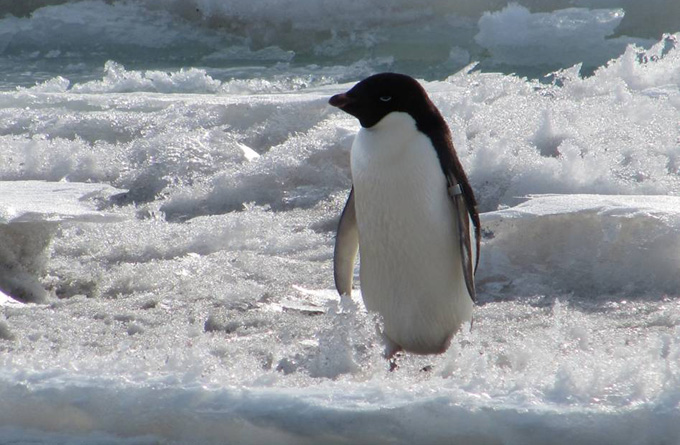During the night of January 21-22, 2011 — the night I finally flew out of the ice — we witnessed a live “show” of an Adelie penguin versus a Weddell seal at the Hut Point on Ross Island in Antarctica. I also photographed four emperor penguins standing beside the runway to Pegasus International Airport. The beauty of Antarctica has attracted so many people year after year regardless of the harsh environment. Even before I boarded the northbound C-17 flight, I had already begun to miss the magic of Antarctica!
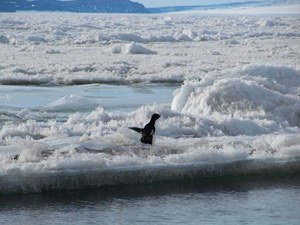
The penguin was very calm for most of the time we were watching, but suddenly it was excited by something and began to turn around and open its wings. What? A seal surfaced from the sea water! This penguin was injured about 10 days ago as someone saw it rushed out of water, being chased by a seal. The wounds are visible from its back and right wing. The penguin cannot go back to water until its wounds are healed. So it gets thinner as it has been living on its fat. Apparently, the past experience has made the penguin watching seals very carefully.
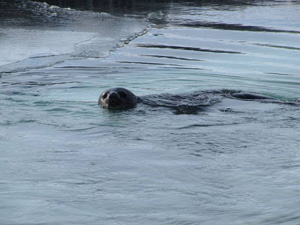
A Weddell seal surfaced from the sea water and set off the alarm of the penguin. After I told the story of this penguin vs. seal, Zhibin said that he didn’t like seals because they eat penguins. Well, I understand Zhibin’s felling and his good wishes, but such a survival competition is a natural selection and constantly going on in Antarctica. This penguin still stands a very good chance to survive!
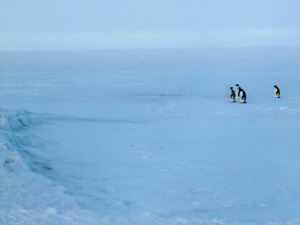
As the Terra Bus that took us from McMurdo to Pegasus moved fast, I only had one chance to take such a photo on four emperor penguins who were standing beside the runway to Pegasus. The blurry image of three penguins on the left was due to the moisture on the bus window, but it is very clear from the penguin on the right that these are emperor penguins – the species with the largest bodies.

This is a scenery I like very much – an Adelie penguin standing on sea ice next to the crystal clear water at the Hut Point with an icebreaker Oden in between the sea ice and the mountains on the Antarctic continent. Isn’t it the beauty that you would love to come back to see again?!
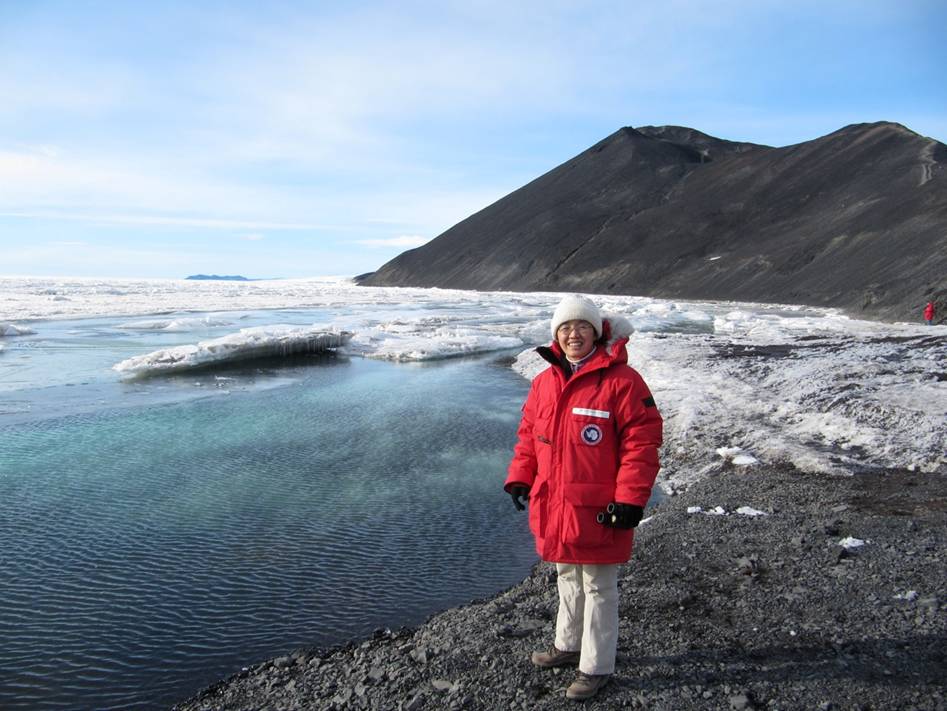
This is perhaps the most relaxed moment I had in the last nine and half weeks. Delighted by the beauty of Antarctica, I have no worries on the McMurdo lidar project, especially considering what a strong beam is left behind — very enthusiastic and capable PhD students and Research Scientist, along with my senior colleague Dr. Chet Gardner. They will make the project go as well as anyone could hope for.

Our love for penguins is endless. Wentao and I enjoyed the exciting moment to photograph with the lovely Adelie penguin.
Everyone who comes to Antarctica loves penguins. But I wonder whether we have loved penguins so much that we begin to behave like penguins sometimes. While waiting to board the C-17 in the passenger terminal, someone stood up and walked to the airplane with bags, then everyone else (including me) stood up and followed. However, the airplane wasn’t ready yet, so I witnessed a group of “red penguins” standing on the ice shelf for over 20 minutes in bitter cold, anxiously waiting for the C-17 to take us home. Isn’t this very similar to what we watched from the movie “March of the Penguins” that once one penguin jumps into the water, others will follow without hesitation! Humans and penguins perhaps do share something in common!
It is really good to get back to the garden city and it is the first time I’ve seen sunset and a dark sky in the last nine and half weeks. Smelling the trees, grass, and flowers reminds me the beauty of nature and human society. I will go straight back to Colorado on Sunday as I would like to resume teaching the lidar class on Monday at 1pm.
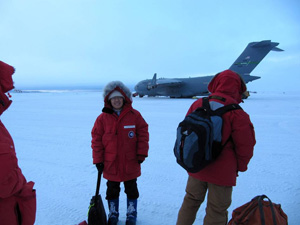
Like I said above, we “giant red penguins” stood on the ice for over 20 minutes, and it proves the usefulness of the blue boots!

Botanic garden in Christchurch, New Zealand. May these flowers and leaves bring our lidar team at McMurdo a peaceful moment!
This is the end of my journey reports. I would like to thank you for “staying” with me through the 5th journey to Antarctica. Your support and kind words have kept me going and given me the courage to overcome all sorts of odds and difficulties. After spending so much time and effort working in Antarctica, I do hope the science and technology that we love and work on will bring the World peace and happiness!
Sincerely,
Xinzhao
